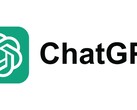Ever get the feeling that your late-night ChatGPT rabbit holes are doing more for Silicon Valley than your own insomnia-driven productivity? That’s because they are. If you’re using free AI tools, congratulations, you’ve been drafted into a global unpaid labor force, and no one even bothered to give you a courtesy mug.
How it actually works (yes, you’re part of it)
Let’s pull back the curtain. Most free AI chatbots, like ChatGPT, Claude, and Gemini, run on models that improve with something called Reinforcement Learning from Human Feedback (RLHF). It sounds complicated, but here’s the simple version:
You ask a question. The AI answers. You rate it with a thumbs up or down. Maybe you prefer one answer over another. Congrats... you just trained the model. Your preferences get logged and crunched, and eventually, the model adjusts to be more "helpful."
These tools don’t just live in the cloud for fun. They learn from you. In fact, you're not just chatting; you're a very affordable (read: unpaid) data annotator.
Yes, even paid users help train the bots
Think you’ve escaped the data mill by paying for GPT-4? Think again. Unless you’ve explicitly opted out in your ChatGPT settings, your interactions are still being used to fine-tune how the AI behaves. That’s right. You’re paying $20/month to contribute to product development. At scale. Without royalties. Neat trick, right?
OpenAI, for example, uses conversations from both free and paid users to improve its models, unless you switch off "chat history." Google’s Gemini? Same deal. Anthropic’s Claude? Also collecting preferences to improve its alignment models.
RLHF isn’t just techie magic... It’s a human conveyor belt
Behind every fancy-sounding acronym like RLHF is a very real and very human process. Contractors are hired to rank responses, flag hallucinations, and classify prompts.
Companies like Sama (once linked to OpenAI), Surge AI, and Scale AI provide this labor, often through low-paid contractors working long hours, many in developing countries. In 2023, reports confirmed RLHF labelers were earning $2 to $15 an hour, depending on region and role. So, yes, real people are clicking “this response is better” over and over. And it’s that feedback loop that powers the bots.
If you’re providing the same type of feedback via thumbs up, you’re basically doing a mini version of their job... for free.
How that feedback gets used
Here’s where it gets interesting. Your feedback doesn’t train the main model directly. It feeds into reward models, smaller systems that tell the main AI how to behave. So when you say, “I like this answer better,” you’re helping build the internal compass the big model follows. Once enough people do it, the AI starts feeling more human, more polite, more helpful… or more like a columnist with boundary issues.
What about your writing style?
AI remembers tone. When you consistently interact with it in a certain style—sarcastic, academic, or brutally blunt—the system learns to respond in kind. It’s not stealing your writing voice and selling it to others (yet), but your patterns help form part of the collective training experience, especially if the bot sees that others like your phrasing or tone.
It’s less about cloning you and more about replicating what works. And what works often comes from someone who never consented to style replication.
CAPTCHA isn’t just for bots anymore
Oh, and those CAPTCHA puzzles you’re solving to prove you’re human? You're not just clicking traffic lights and crosswalks to get into your email. You're labeling data for machine learning models. Google’s reCAPTCHA, hCaptcha, and Cloudflare’s Turnstile all feed visual data into training pipelines, helping AIs see the world one blurry street sign at a time.
So yes, even your security verification is part of the feedback economy now.
Billions in value... Zero recognition
This isn’t some fringe conspiracy. The training data market is booming. According to MarketsandMarkets, the global training data market size is projected to grow from $1.5 billion in 2023 to over $4.6 billion by 2030. And while that includes synthetic data and curated datasets, the value of human-labeled real-world data, aka what you provide casually every day, is climbing.
Yet most users still think their chatbot convo disappears into the ether. Spoiler: it doesn’t. Not unless you’ve explicitly disabled logging (and even then… trust, but verify).
Final thought: You’re not paranoid... you’re just involved
Here’s the kicker. You’re part of building the very thing that might eventually replace your job, outpace your creativity, or turn your tweets into product samples. That doesn’t mean you should stop using AI, but you should know what you’re contributing to. And maybe, just maybe, ask for a little transparency in return.
After all, if your free labor is good enough to shape the next generation of billion-dollar AI models, the least they could do is say thanks.
Source(s)
Own research and experience
AI Training Dataset Market Share, Forecast | Growth Analysis and Trends Report [2032]
Image source: Vjulien Tromeur - Unsplash






